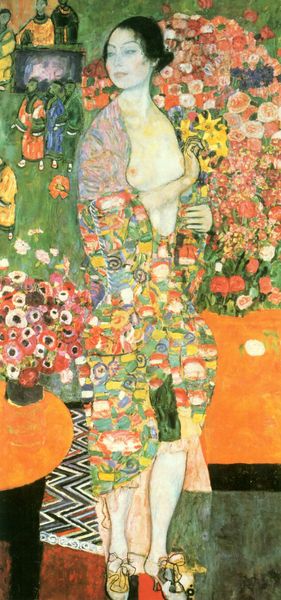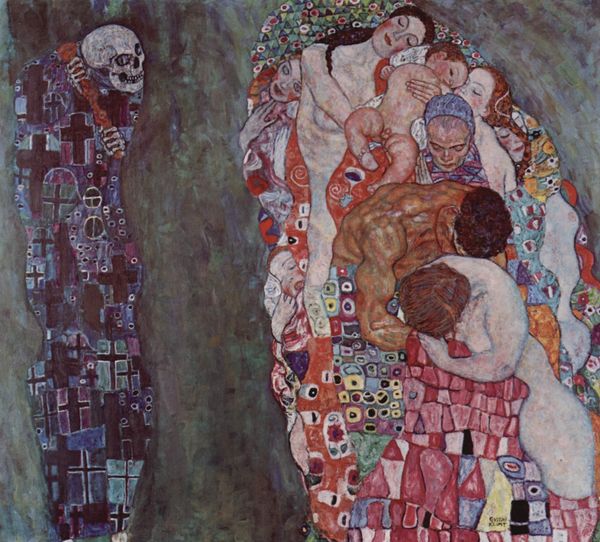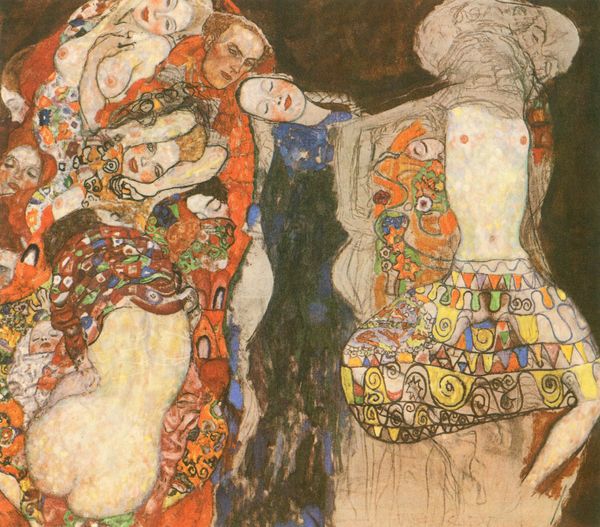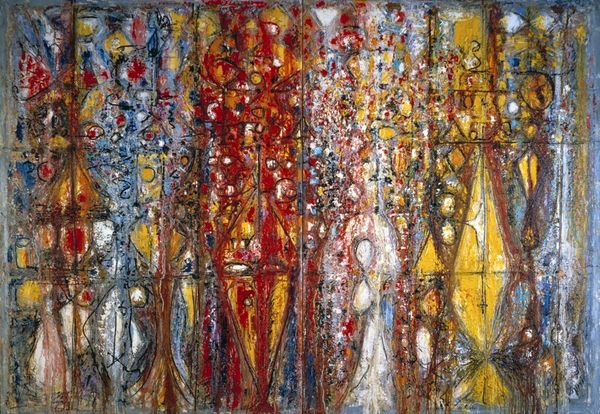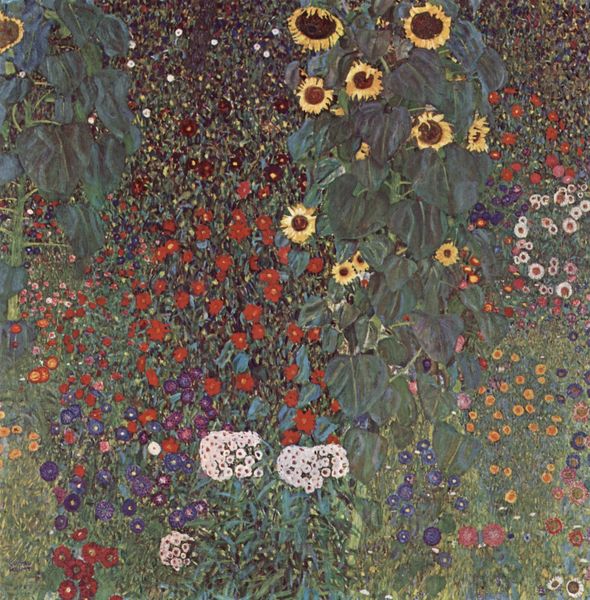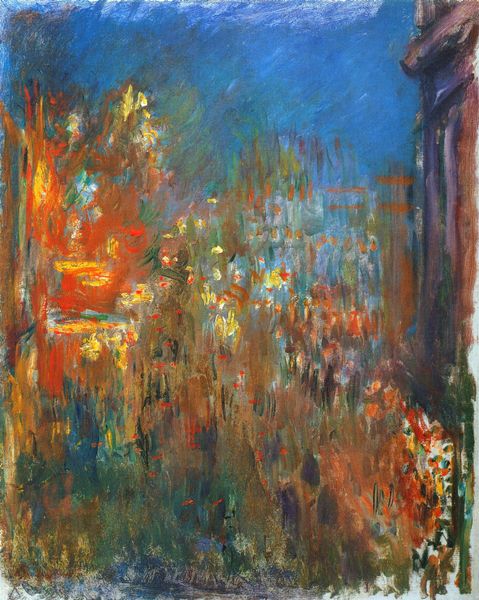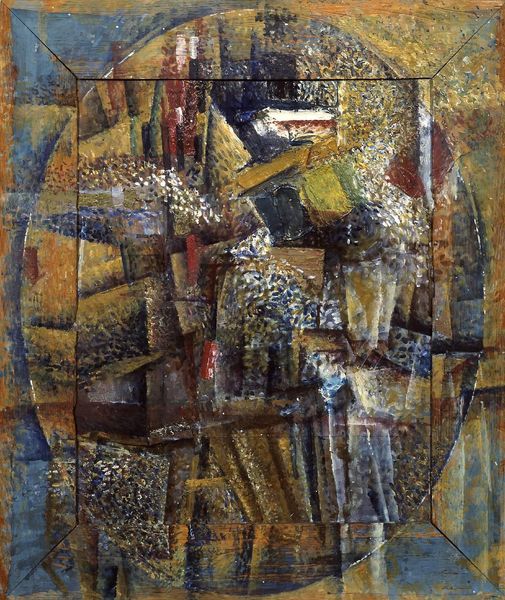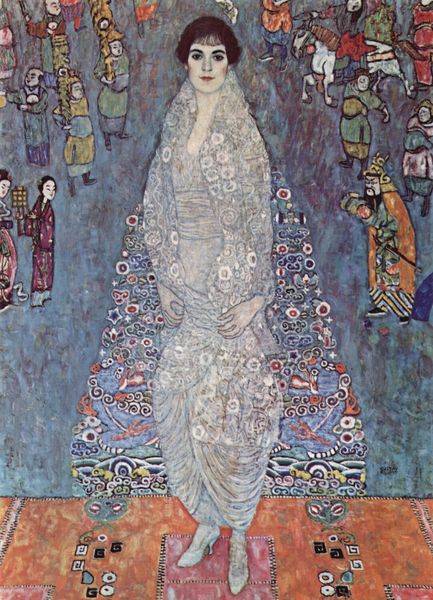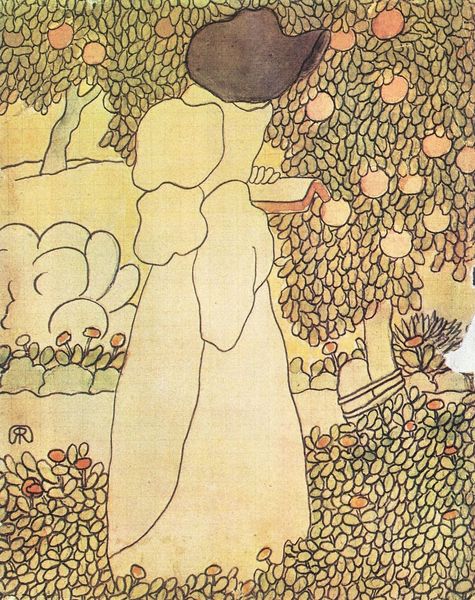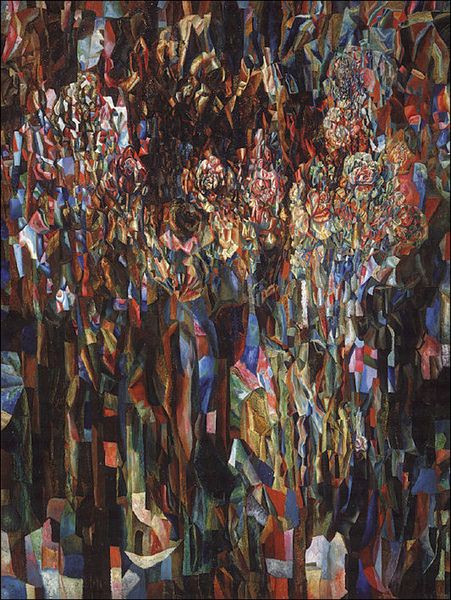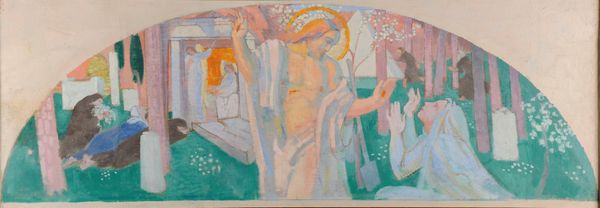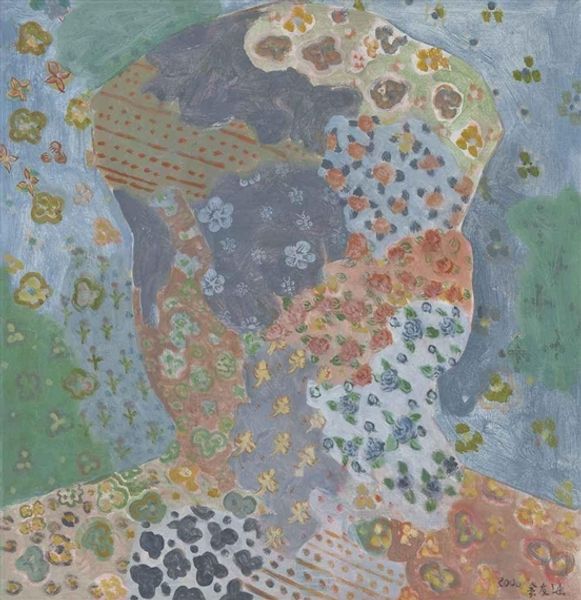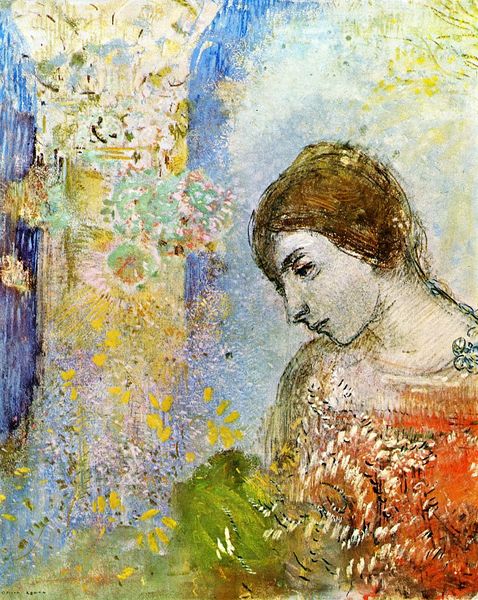
tempera, painting, mural
#
art-nouveau
#
tempera
#
painting
#
landscape
#
figuration
#
geometric
#
symbolism
#
decorative-art
#
mural
Copyright: Public domain US
Curator: Allow me to introduce "La primavera che perennemente si rinnova," or "Spring that perpetually renews itself" by Galileo Chini, executed in 1914. Editor: What strikes me immediately is the scale and density. It feels almost like stepping into an illuminated manuscript—vibrant, layered, and rich in texture, even at a distance. Curator: Indeed. Chini masterfully blends Art Nouveau aesthetics with Symbolist undertones here. The composition features five female figures amidst geometric patterns and stylized flora, executed in tempera. Note the interplay between linear forms and curvilinear motifs, so typical of the period. Editor: And look how the material treatment further flattens the picture plane, moving past traditional representation. The geometric components, along with the repetitive designs, indicate craft and applied decoration beyond the figures themselves. Are the women also symbols, icons perhaps, caught in Chini's vision? Curator: Undoubtedly. Each figure seems to represent a different aspect of Spring, heralding renewal and fertility through their gestures and placements within these layered geometric motifs. One cannot help but to get transported, from a formalist point of view, into an allegorical representation of nature’s constant regeneration. Editor: Yes, but the creation of that ideal is itself steeped in labor—the laborious application of tempera, the pattern making...Chini's art becomes a tangible manifestation of a world made real through hard work. It asks us to think about how artistic vision intertwines with social factors of production. Curator: True. While "La primavera che perennemente si rinnova" echoes a rich tradition of allegorical painting through its classical arrangement, it simultaneously participates in modern dialogues concerning formal reduction and surface adornment. Its aesthetic construction allows one to glimpse ideas of what art once was in relation to art yet to be. Editor: Ultimately, this mural is successful because it challenges us to look at decorative practices. The making process embodies the ideal of a world in endless creation, constantly unfolding, flower after flower, application by careful application. Curator: It’s remarkable how Chini captured timelessness within very specific historical idioms, leaving the work accessible for an ongoing range of perspectives. Editor: It gives great opportunity to be interpreted across varying methodologies and philosophies surrounding labor, craft, production, materiality, and consumption.
Comments
No comments
Be the first to comment and join the conversation on the ultimate creative platform.
